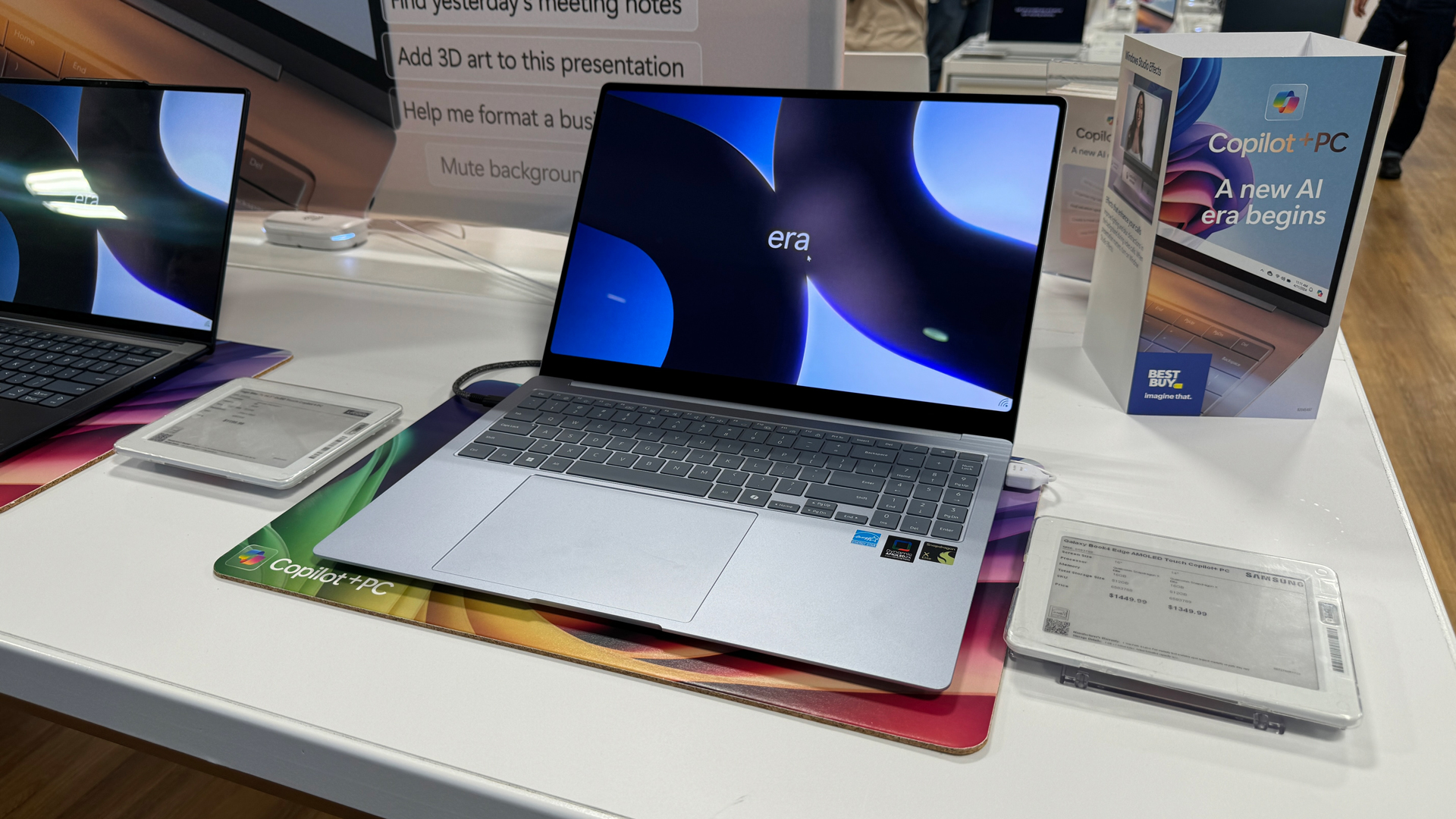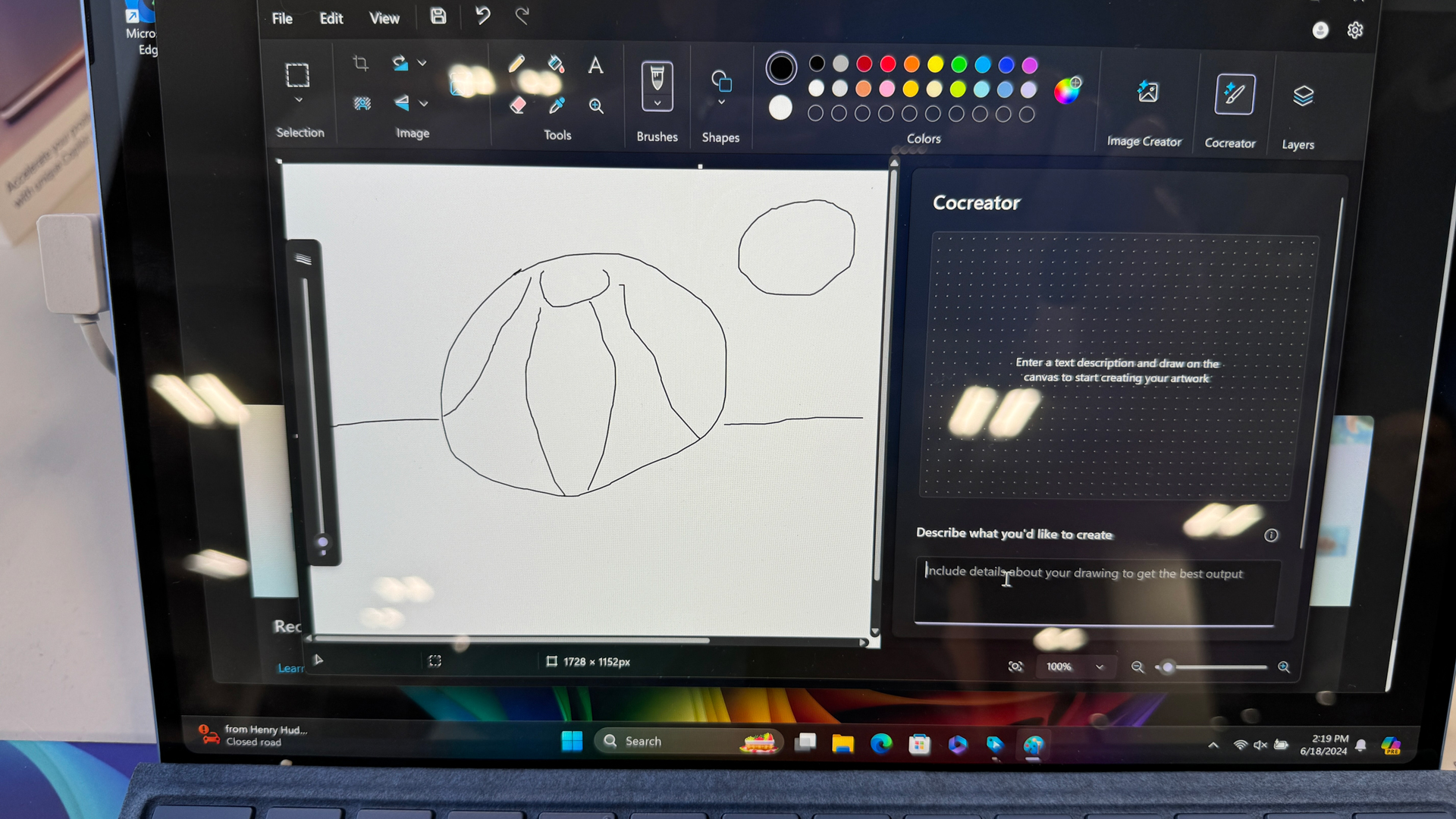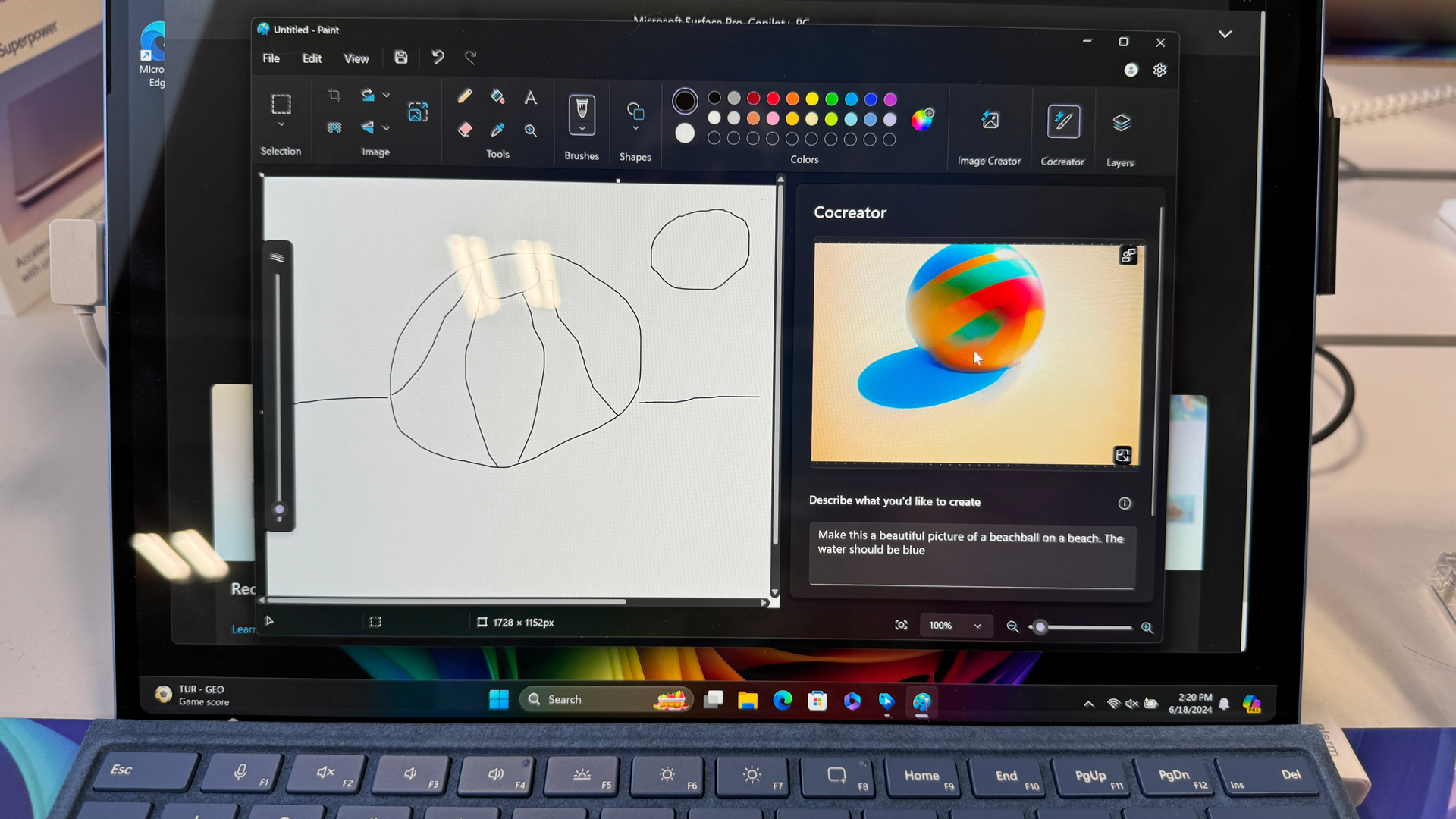The new era of CoPilot+ PCs is upon us, bursting onto the scene at your local Best Buy with a bevy of laptops all designed to do AI tasks locally.
To be clear, there are two classes of these new AI PCs. All have a new, almost indescribable Copilot keyboard button (it looks nothing like a copilot on an airplane), but only Copilot+ PCs with new Qualcomm Snapdragon X Elite or X Plus chips are ready to perform a variety of local AI tricks and tasks.
On June 18, 2024 – the official launch day – I subwayed downtown to a huge Best Buy to see, touch, and play with all those new Copilot+ PCs. There are a lot of them. Five manufacturers are rolling out these laptops, including Lenovo, Samsung, HP, Dell, and Microsoft.
That’s notable because I can’t remember ever seeing so many new Windows laptops that didn’t run Intel or at least AMD chips.
There’s considerable signable to let you know you’ve entered the land of Copilot PCs, but if that’s not enough, each Copilot+ laptop is signified by a color placemat underneath it.
You might also notice an almost “Intel Inside”-style sticker on the palm rest section of each of these portables. Qualcomm is taking no chances here. These are ARM-based and not X86 systems.
Each one of the laptops is fairly locked down in terms of the range of AI experience. In fact, Windows Recall is listed as “Coming Soon,” but you can play with Windows Creator and Windows Studio immediately.
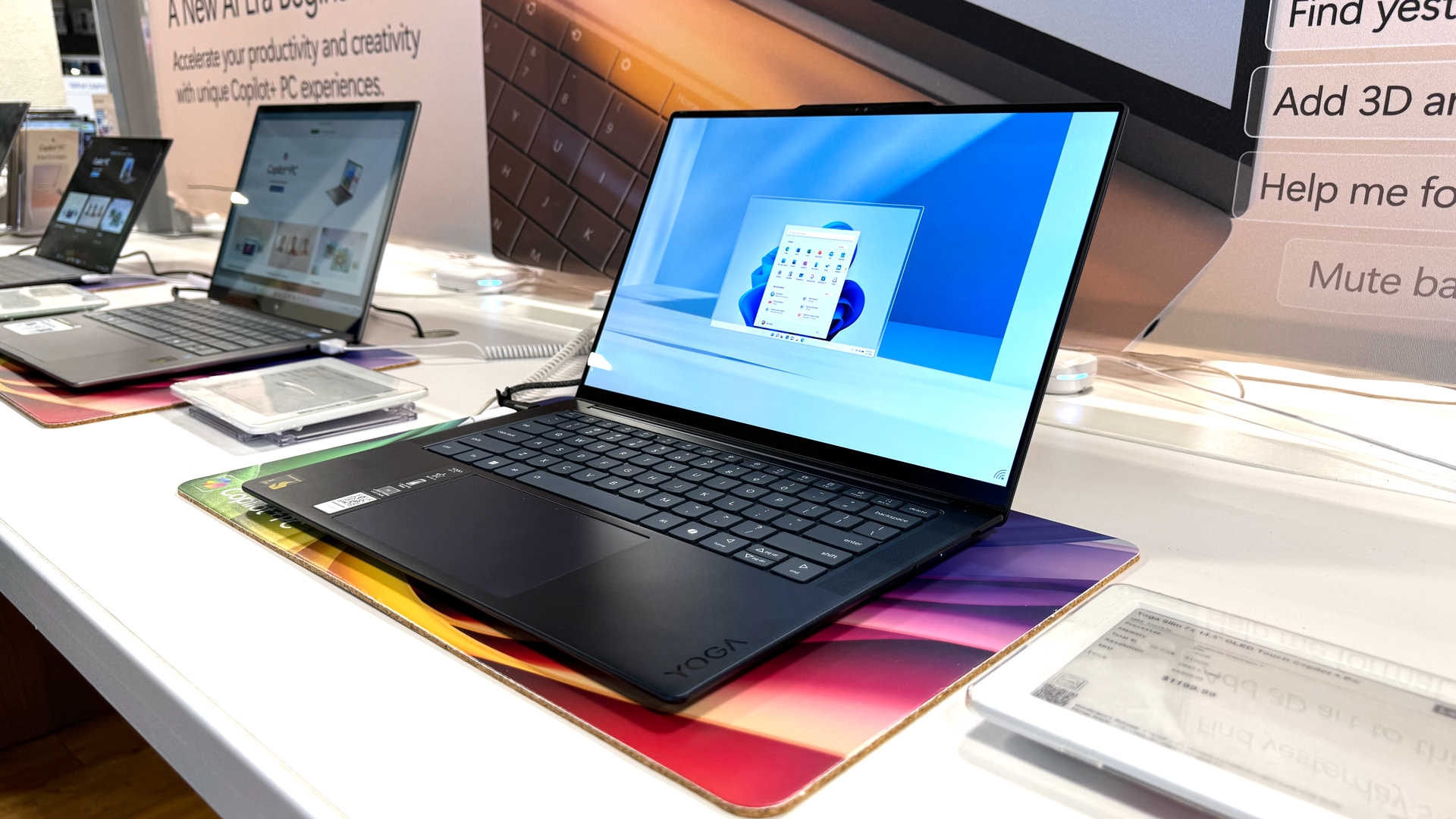
I decided to try both on a Lenovo Yoga and a Microsoft Surface Pro 10. The real fun is launching Task Manager alongside the interactive demo. When I clicked “Performance,” I could see the load on each piece of silicon: CPU, GPU, and, most notably, the new NPU (Neural Processing Unit), designed to step in and handle local AI requests.
I opened Windows Studio and selected the live filter that made me look like a cartoon character. Instantly, the NPU performance bar spiked, but as soon as I exited Studio, the NPU workload dropped to essentially zero.
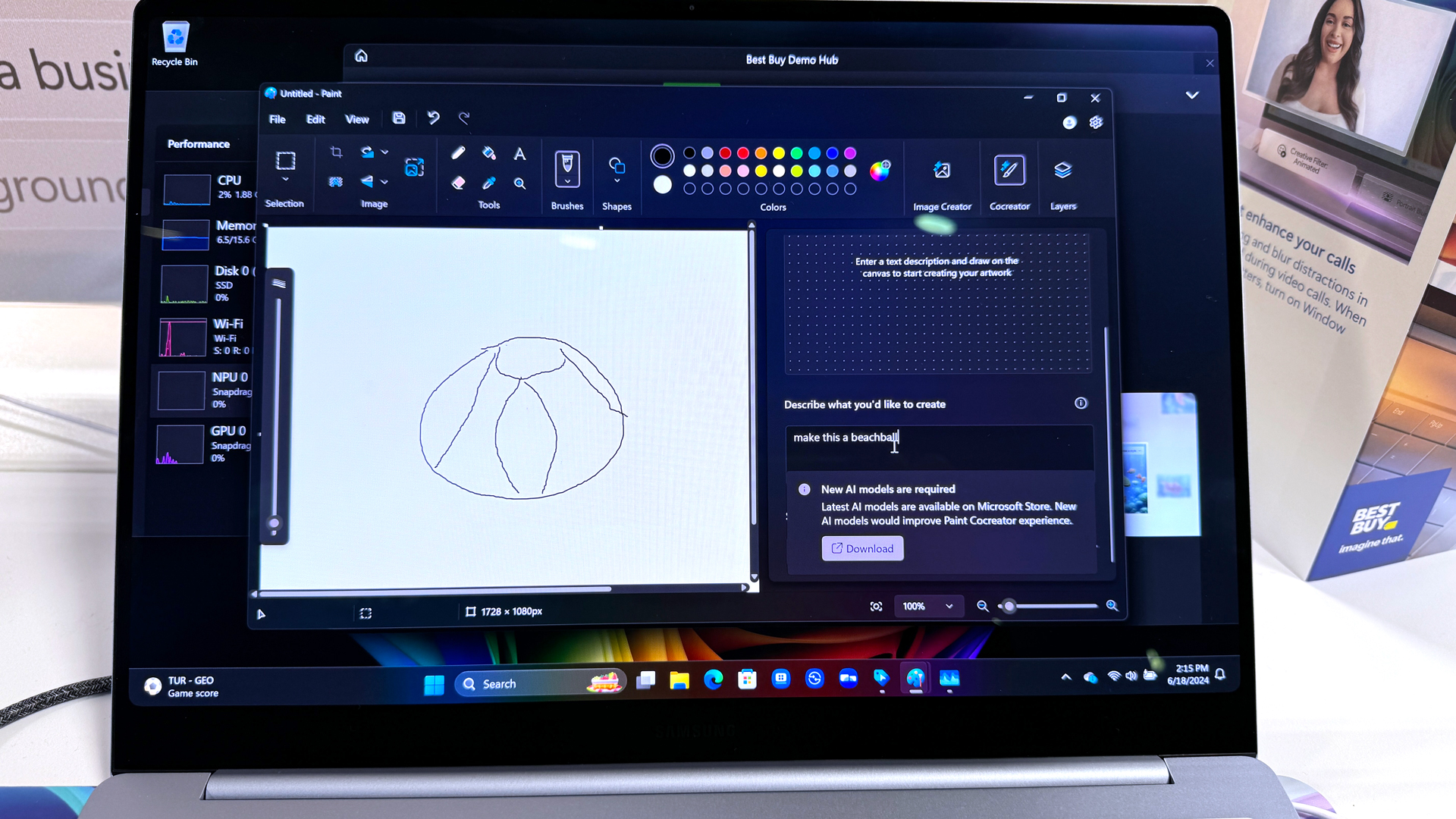
Later, I opened Windows Creator (Painter on AI steroids) and used the mouse to draw a rudimentary tree. In a prompt box alongside it, I asked it to turn this into a beautiful tree. The NPU spiked, and within seconds, a space above my prompt filled with a lovely illustration of a tree.
It’s early days, and these systems are far from foolproof. At one point, many of the new Copilot+ PCs at the store announced they were downloading fresh AI updates (new models, I suppose) and could not handle queries.
At another point, I asked for Windows Creator to turn a scribble of a ball and a few lines into a beachball on the beach. First, it generated what looked like an egg. I had to up the “Creativity slider” to 100% to get a beachball, but it was never on the beach.
This might seem like a problem, but the goal of useful AI should not be to do it all for you; instead, it is to assist and perhaps spark creativity. I could imagine taking that ball and dropping it into my own illustration of the ocean.
Many questions remain about how ready we are to have AI available not just on the best chatbot apps and websites (you can access the Web-based Copilot through the button on non-“+” PCs) but as an integral part of our computers.
Microsoft’s updated Windows 11 with Copilot, Qualcomm’s Snapdragon X Elite and X Plus, and countless new laptops running them represent a new chapter in the age of personal computing. I don’t know if it’s what we want, but if you find the time to walk into your local PC retailer and try them out, I encourage you to do so.
You might be surprised at what you find. Enjoy this first Summer of the AI PC.
